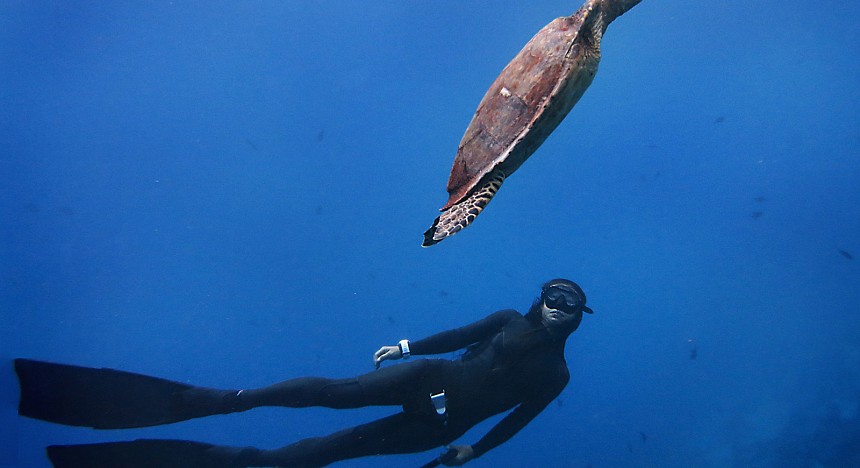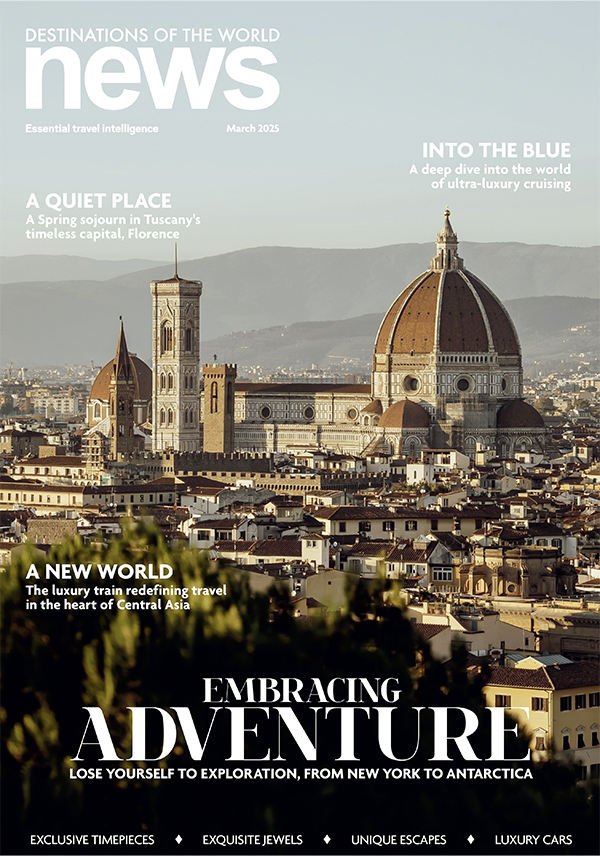Scuba diving and snorkelling may offer serenity beneath the surface, but freediving is surely the purest way to explore the beauty of the underwater world. With Anantara launching the first PADI-certified freediving centre in the Maldives, resident freediving champion, Mari Kagaya, tells us about her subaquatic passion.

When did you first decide to plunge into freediving? Please excuse the pun.
I started my diving journey in the Caribbean, where I worked as a scuba instructor in Honduras since 2002. In 2006, I decided to move to the Maldives where I find it more interesting to dive without scuba equipment. Freediving is a very different experience that allows you to purely focus on what is happening to your mind and body, escaping the restraints of scuba gear; your encounters with sea life are graceful, natural and deeply personal. It is also a part of the local cultural heritage. Since ancient times, islanders have harvested sponges and clasped pearls from beneath the waves.
What is the main thing you teach to beginners, or anyone considering their first freedive?
You don’t need to be an athlete to enjoy freediving because this sport is more about mind-set and technique. The ultimate goal is for a freediver to join the water, never fighting it. Therefore relaxation is one of the most important things. There are no tricks or magic breathing techniques. The course starts with learning theory of freediving, equalisation, visualisation and stretching. All of these combined will allow you to make the most out of freediving.

Can you tell us your favourite dive sites across the globe?
There are many places I would like to discover, but I put the Maldives at the top of the list of the sites. The waters of the Indian Ocean are renowned for their excellent visibility. These islands are home to a magnificent array of wildlife. A trip below the surface reveals an explosion of colour, from tropical fish to coral gardens. The Maldives are the only place, where whale sharks, the largest fish in the world, appear all year round. You are likely to encounter them up close at a protected dive site, just a short boat trip from the Anantara resorts.
What’s the most memorable thing you’ve seen under the waves?
Every dive is a new adventure, but I will have to name my first encounter with the creature high on the priority list for all divers – the manta ray. The largest of the rays, they are abundant in the Maldives and glide through the water like birds. I was struck how gentle and graceful they are when I first saw them. These creatures are also highly intelligent with many showing a remarkable ability to interplay with divers. Having a chance to meet them while in the Maldives is definitely a not-to-miss opportunity.

Tell us about reaching 46 metres. How challenging was that and how did you prepare for the dive?
In freediving, as in any type of training, you have to get out of your comfort zone if you want to improve. However, while most extreme sports are about adrenaline and hearts racing, willpower and toughness, freediving is about learning to completely relax. It all comes down to regular practice. But the water helps you to relax, your heartbeat drops as soon as you immerse in the water and it gives you the sensation of flying. The deeper you go – the more profound the effect is.
Freediving is now available at Anantara Dhigu Maldives Resort, Anantara Veli Maldives Resort and Naladhu Maldives.










